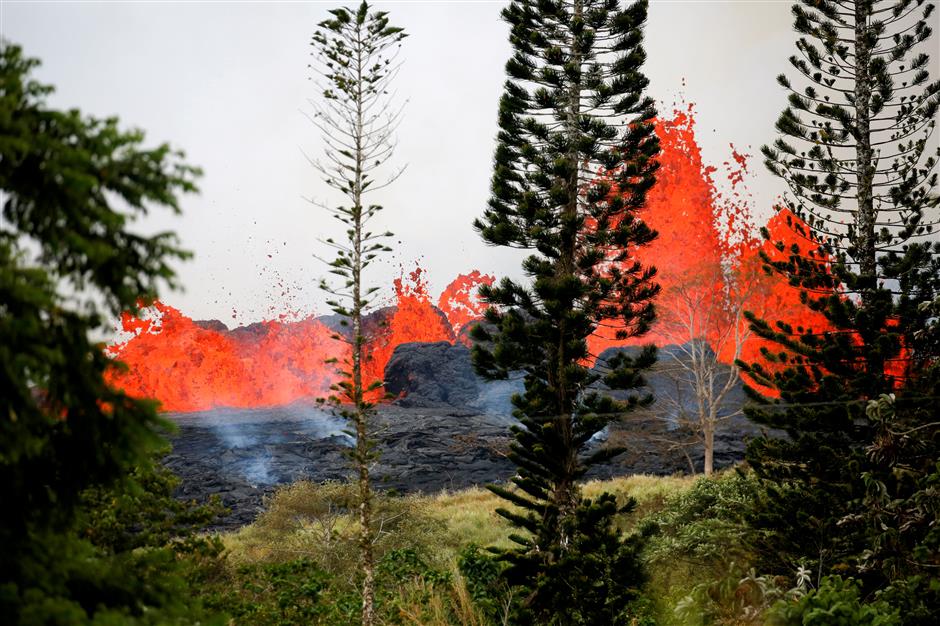First serious injury reported as Hawaii volcano threat worsens

Lava erupts on the outskirts of Pahoa during ongoing eruptions of the Kilauea Volcano in Hawaii, US, May 19, 2018.
A stream of lava blocked a Hawaii highway that serves as an escape route for coastal residents, while the first known serious injury was reported from fresh explosive eruptions from the Kilauea volcano Sunday.
A homeowner on Noni Farms Road who was on a third-floor balcony had his leg shattered from his shin to his foot when hit by lava spatter, said Janet Snyder, a spokesperson for the Office of the Mayor, County of Hawaii.
She added that lava spatters “can weigh as much as a refrigerator and even small pieces of spatter can kill.”
As magma destroyed four more homes, molten rock from two huge cracks merged into a single stream, threatening to block other escape routes and touching off brush fires.
The erupting lava, which can reach a blistering 1,093 degrees Celsius, crossed Highway 137 shortly before midnight local time, Hawaii’s Civil Defense Agency said, and sent lava flowing into the ocean.
That prompted warnings of laze — clouds of hydrochloric acid and steam embedded with fine glass particles formed when hot lava hits ocean water.
Authorities were trying to open a road that was blocked by lava in 2014 to serve as an alternative escape route, Jessica Ferracane of the National Park Service told reporters.
The Hawaii National Guard has warned of mandatory evacuations if more roads are blocked.
For weeks, geologists have warned that hotter, fresher magma from Kilauea’s summit would run underground and emerge some 40 kilometers east in the lower Puna district, where older, cooler lava has already destroyed 44 homes and other structures.
“Summit magma has arrived,” US Geological Survey scientist Wendy Stovall said. “There is much more stuff coming out of the ground and its going to produce flows that will move much further away.”
Fountains of bright orange lava were seen spouting at least 6 meters high, and spewing rivers of molten rock on Saturday.
Carolyn Pearcheta, operational geologist at the Hawaii Volcano Authority, told reporters that hotter and more viscous lava could be on the way, with fountains spurting as high as 183 meters.
“We’ve seen the clearing out of the system," she said. “We call that the ‘throat clearing’ phase.”
At the volcano's summit, another large explosive eruption occurred around midnight, sending up a nearly 3.2-kilometer-high ash plume, the Hawaiian Volcano Observatory said.
Scientists expect a series of eruptions from Kilauea, one of the world’s most active volcanoes, that could spread ash and volcanic smog across the Big Island.
That could pose a hazard to aircraft if it blows into their routes at around 9,144 meters.
Around 2,000 residents of Leilani Estates and Laipuna Gardens housing areas near Pahoa, about 48 kilometers south of Hilo, were ordered to evacuate due to at least 22 volcanic cracks that have opened.
Thousands more residents have voluntarily evacuated due to life-threatening levels of toxic sulfur dioxide gas.















